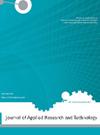混合比对桄榔纤维/玻璃纤维/聚酯混合复合材料弯曲性能的影响
Q3 Engineering
Journal of Applied Research and Technology
Pub Date : 2024-02-29
DOI:10.22201/icat.24486736e.2024.22.1.2176
引用次数: 0
摘要
研究了混合比对糖棕榈/玻璃纤维混合增强聚酯复合材料弯曲性能的影响。在嵌入之前,先将糖棕纤维从原来的网孔中取出,洗净,碱处理,然后切成 ~10 mm 长。试样从采用冷压技术制造的不同混合比的复合板上切割下来。纤维的总体积分数保持在约 0.21,其中使用了四种混合比和两种跨度-深度比。将单向排列的 E 玻璃直接放置在底模表面并用基质润湿,然后将 SPF 以随机取向的方式均匀地浇注在润湿的 E 玻璃排列上。试样的制备和测试按照 ASTM D790 标准进行,其中 E 玻璃侧置于梁的拉伸侧。结果发现,随着混合比的增加,抗弯强度和最大应力应变都明显增加。本文章由计算机程序翻译,如有差异,请以英文原文为准。
effect of hybrid ratio on the flexural properties of Arenga Pinnata fiber/E-glass fiber/polyester hybrid composites
Hybrid ratio effect on flexural properties of sugar palm/E-glass fiber hybrid-reinforced polyester composites has been investigated. Before being embedded, the sugar palm fiber was taken off from its original mesh, washed, alkali-treated, and chopped into ~10 mm long. The specimens were cut from composite plates having different hybrid ratios, fabricated using cold pressed technique. The total fiber volume fraction was kept at ~0.21, where four hybrid ratios, and two span-to-depth ratios were used. The E-glass was arranged unidirectionally and placed right on the surface of a bottom mold and wetted using the matrix, and the SPF was then evenly poured on the wet E-glass arrangement in randomly oriented pattern. Specimen preparation and testing were carried out according to the ASTM D790 standard, where the E-glass sides were placed in tension sides of the beams. It was found that flexural strength, and strain at maximum stress significantly increase with the increase of hybrid ratio.
求助全文
通过发布文献求助,成功后即可免费获取论文全文。
去求助
来源期刊

Journal of Applied Research and Technology
工程技术-工程:电子与电气
CiteScore
1.50
自引率
0.00%
发文量
0
审稿时长
6-12 weeks
期刊介绍:
The Journal of Applied Research and Technology (JART) is a bimonthly open access journal that publishes papers on innovative applications, development of new technologies and efficient solutions in engineering, computing and scientific research. JART publishes manuscripts describing original research, with significant results based on experimental, theoretical and numerical work.
The journal does not charge for submission, processing, publication of manuscripts or for color reproduction of photographs.
JART classifies research into the following main fields:
-Material Science:
Biomaterials, carbon, ceramics, composite, metals, polymers, thin films, functional materials and semiconductors.
-Computer Science:
Computer graphics and visualization, programming, human-computer interaction, neural networks, image processing and software engineering.
-Industrial Engineering:
Operations research, systems engineering, management science, complex systems and cybernetics applications and information technologies
-Electronic Engineering:
Solid-state physics, radio engineering, telecommunications, control systems, signal processing, power electronics, electronic devices and circuits and automation.
-Instrumentation engineering and science:
Measurement devices (pressure, temperature, flow, voltage, frequency etc.), precision engineering, medical devices, instrumentation for education (devices and software), sensor technology, mechatronics and robotics.
 求助内容:
求助内容: 应助结果提醒方式:
应助结果提醒方式:


